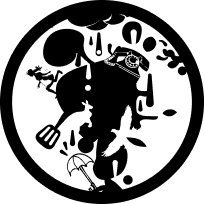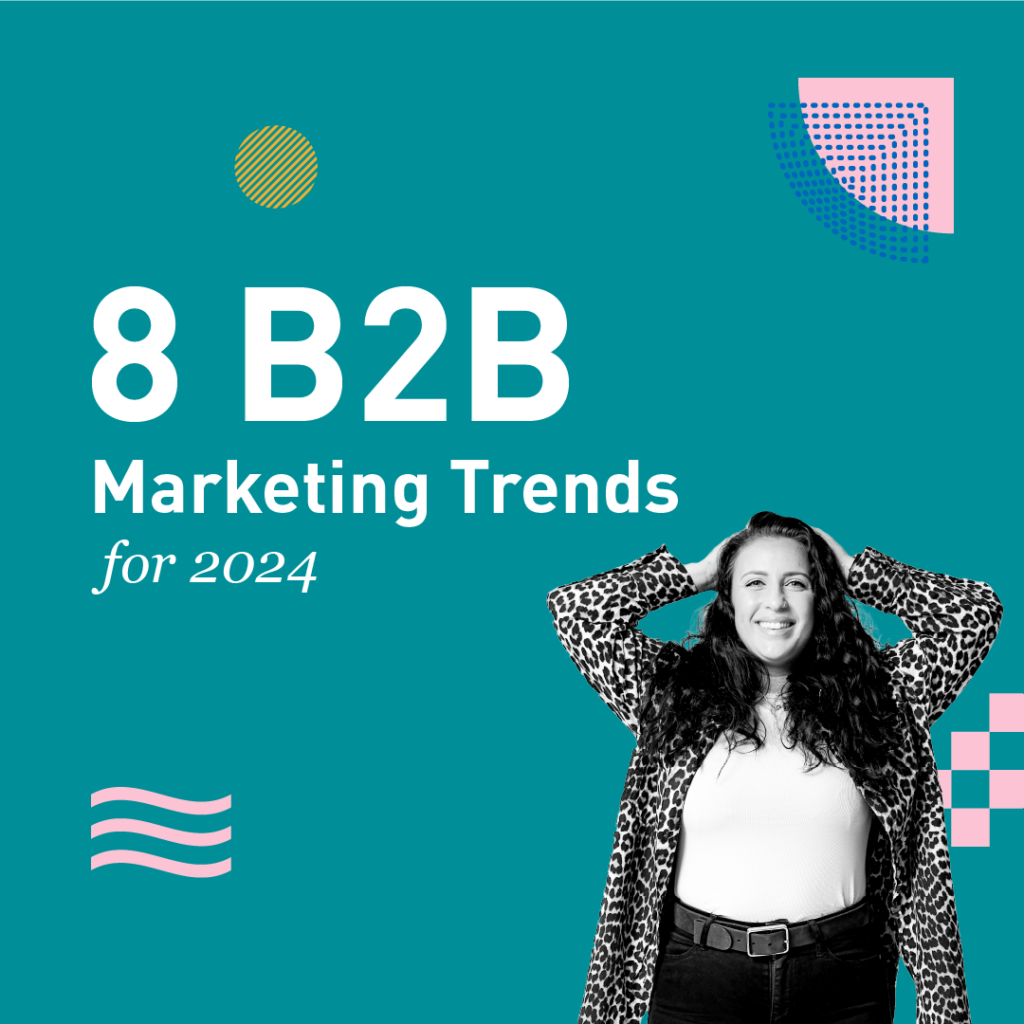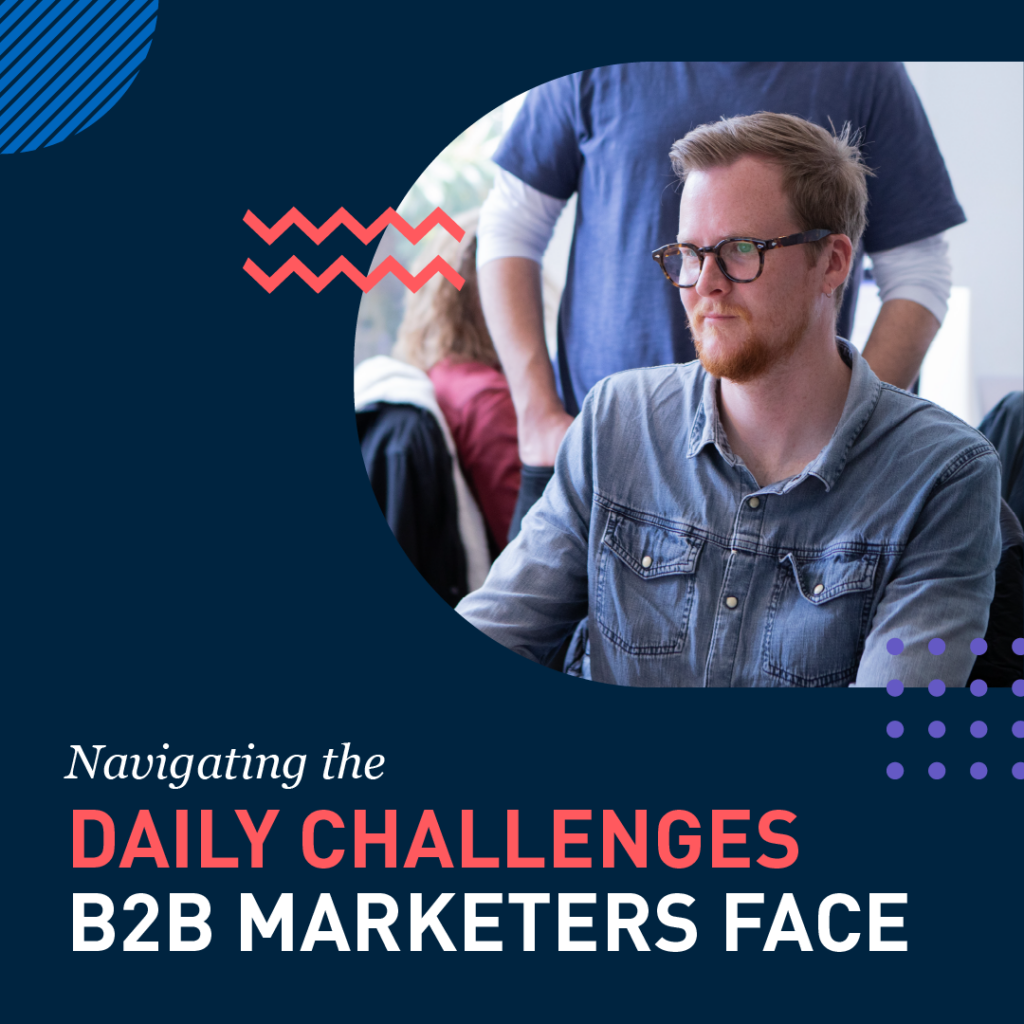Beautiful, purposeful, human-centered content marketing on LinkedIn can significantly increase the visibility of your brand, build credibility, and create a meaningful relationship with your audience. But where do you start? Read on for the 12 steps to creating a robust content marketing presence for your brand.
Here’s how to get started with content marketing on LinkedIn:
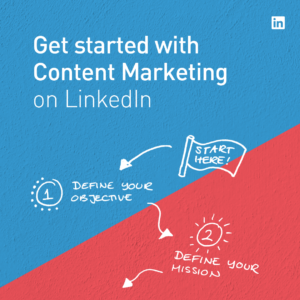
1. Define your objective
The big question: What is it that you want to achieve? Be specific. It could be to raise brand awareness, generate leads, or to educate the market about a product that they didn’t even know what they needed. Here at BlueMelon, our content objective is to educate our community about how to do content marketing on LinkedIn.
2. Define your mission
So now that you know what you want to achieve, it’s time to decide your overall approach to making it happen. What value are you going to bring to your audience through content? Here at BlueMelon, our mission is to be the leading provider of creative LinkedIn content marketing solutions.
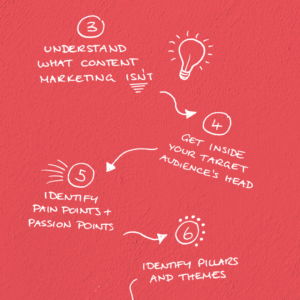
3. Understand what content marketing isn’t
Before you go any further, let’s make sure that content marketing on LinkedIn is the right weapon of choice for your desired objectives.
Content marketing is a type of marketing that involves the creation and sharing of online material (such as videos, blogs, and social media posts) that does not explicitly promote a brand but is intended to stimulate interest in its products or services. If your preference is to do a marketing campaign that talks only about your products, then content marketing may not be your best bet.
4. Get inside your target audience’s head
Now that we’ve set the course, let’s dig into your audience personas, motivations and customer journey. It can help to do an exercise that we like to call ‘But why?’. It goes something like this. What might motivate the target audience member to buy our product? Answer X. But why? Answer Y. But why? Answer Z. Keep asking ‘But why?’ and you’ll typically land on one or several deeper underlying motivations, like these in Maslow’s hierarchy of needs. Or this B2B hierarchy of needs.
5. Understand their pain points and passion points
Okay, so you know who your audience is, where they came from, and what’s driving them. Now let’s extract your customer passion and pain points that your content is going to speak to. The best way to do this is to interview your customers. If you can understand your customer’s pain points, you’ll find it much easier to create stories and content that will fit their needs.
6. Identify pillars and themes that speak to your audience’s passion and pain points
Armed with the knowledge of what your audience is into and what’s keeping them up at night, it’s time to designate some 2-5 content pillars. Then within those pillars, start defining themes. The goal here is to select the ones that will alleviate pain points and ignite your audience’s passion points. Rattle off as many as you want. Go! At BlueMelon, one of our content pillars is ‘Our Craft’ within that we have four themes: Design, Digital Experiences, Content, and Branding.
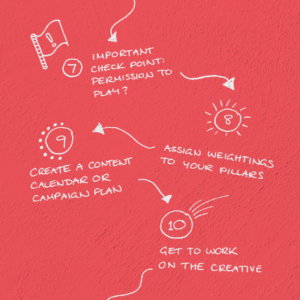
7. Important checkpoint: Permission to play?
Your chosen pillars and themes must be relevant and appropriate for your brand. Does your brand have the credibility to speak on those subjects? Do they align with your objectives, mission, and brand values? Take a long hard look at your plan before moving on to step 8.
8. Assign weightings to your pillars
The next step is to assign a weighting to each pillar. Weightings will help you when you come to create your content calendar. Typically you would apply a high weighting to the priority pillars and a lower weighting to experimental, lighter, or lifestyle posts. Some content strategists will assign a weighting at this point to promotional content. A common rule of thumb for content marketing is 80% helpful, informative, entertaining content, and 20% promotional content with a direct call to action.
9. Create a content calendar or campaign plan
You can map it out on an excel spreadsheet, a calendar, a wall, whatever floats your boat. To make things easy, we recommend determining how many times a week you want to post, then working out your total number of posts for the month. From there, you can refer back to your pillars and weightings to know how many posts you will need to create for each pillar. It’s also helpful to map out any key dates or tentpole events on your calendar that your brand might like to participate in through content. If you’re planning to sponsor your content, it helps to have a total budget in mind and then to assign a budget to each post. You can also wait to see which content performs the best organically and then sponsor it to increase your reach.
10. Get to work on the creative
Now for the fun part! Come up with a creative concept for each post. Initially, it can be helpful to keep these super top line, just with a brief description or bullet points. Then you can refine each one, shoot video, design, blog, and write post copy.
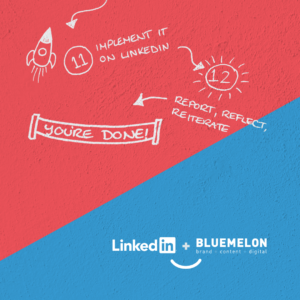
11. Implement it on LinkedIn
Once all your assets are ready to go (including post copy), it’s time to post them on LinkedIn. If you would like to post all in one batch, you will need to use a scheduling tool, like Sprout Social. For paid campaigns, you will need to know your way around LinkedIn Campaign manager, or the relevant platform for the channel you’re working on. A/B testing is a great way to optimize and improve the performance of your overtime.
12. Report, reflect and iterate
The beauty of an always-on content strategy is that it allows you to track the performance of your content on LinkedIn, to capture learnings, and iterate over time. A solid reporting process will give you the data you need to tweak your pillar weightings to perfection, to highlight any hot themes or topics, and to put to pasture anything that’s falling flat.
So there you have it! The 12 simple steps for getting started with content marketing on LinkedIn. This advice is for a basic B2B always-on content marketing approach. Depending on your objectives, you may need to incorporate additional steps, such as AB testing, community management, and repurposing content. The key to success is to know your target audience and put them at the heart of everything that you do.
We hope that these tips will help you build great relationships and connect with the hearts and minds of your people on LinkedIn.
Was this post helpful to you? #Letsconnect
Could a clever content strategy benefit your business? Contact us here
